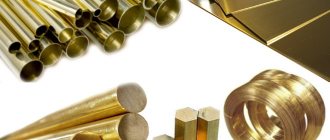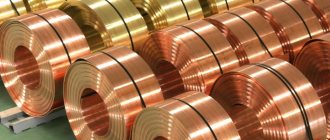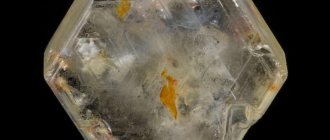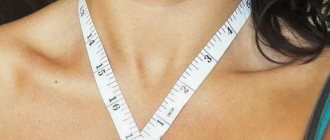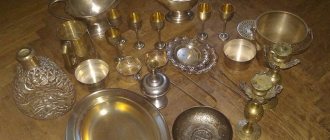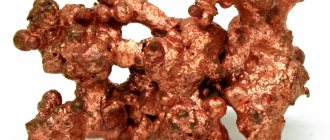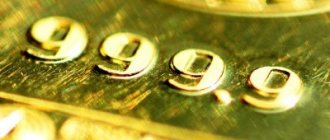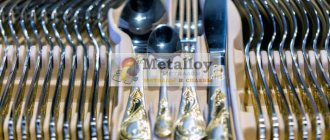Brass is an alloy of copper and zinc. The golden hue gives it a similarity to gold, but this compound is much cheaper. Pure copper is more expensive than brass. This is due to the lower cost of zinc, which is part of brass. The resulting alloy has characteristics that copper does not have at a lower price.
The alloy is resistant to environmental influences. However, it requires varnish to be applied to the surface, as it turns black over time. Due to its ductility and hardness, it is used both in industrial production and for the manufacture of costume jewelry as decorations.
Brass fittings
What is brass
The main components of brass alloy are copper and zinc. The proportional components of these metals may be different. The amount of zinc varies. Its minimum value is 20%. The maximum reaches 50%. At the same time, the alloy changes its color: it can be golden, yellow or green.
The percentage of zinc is so important that it can change the characteristics of the material. This refers to its ductility and hardness.
Structure and composition
The composition of the alloy is formed from the phases:
- Alpha phase. Zinc content up to 35%
- Beta phase. The presence of zinc is up to 50%. The composition also includes tin - 6%.
In some cases, a single alpha phase is present. Depending on changes in the percentage composition of the main components, the structure of brass can simultaneously consist of 2 phases - alpha and beta.
The chemical composition of brass, in addition to copper and the main alloying element zinc, includes additives. These include alloying elements: aluminum, iron, manganese, lead, silicon, nickel. They make up a small percentage of the compound. Each of them affects the characteristics of the material.
Properties and characteristics
The main quality in the characteristics of brass is its corrosion resistance. But it also has other properties:
- The ability of the alloy to withstand aggressive environments, especially after coating the surface with varnish.
- Strength of brass.
- Plasticity of the alloy.
- The ability of the material to be processed by pressure. The process is carried out both hot at high temperatures and cold.
- The alloy can be subjected to resistance welding and soldering.
- Thermal conductivity, which increases with increasing percentage of copper.
- Melting point, which is 880–950 degrees. With less zinc added, the melting point decreases.
- The material has non-magnetic properties.
The main factor in the hardness and ductility of the joint is zinc. An increase in its quantitative content is directly related to an increase in strength characteristics. Plasticity increases only up to a quantitative zinc content of 36%. With a subsequent increase to 45%, this indicator decreases.
In order to increase the hardness of the alloy, a heat treatment called cold hardening is carried out. It helps not only to increase the strength index, but also relieves internal, structural stresses.
Alloying additives affect the performance characteristics. Their influence is indicated in the table:
| Name of alloying element | Effect on brass characteristics |
| Silicon | Its high presence leads to a decrease in the hardness of brass. |
| Lead | Improves anti-friction properties. |
| Manganese, aluminum and tin | Increases resistance to tearing. Corrosion resistance is increasing. |
| Nickel | Reduces the risk of material cracking. The alloy acquires a peculiar color. This connection is called “white brass”. |
| Arsenic | The material has the ability to work in liquid, fresh media. |
Marking
There are 2 types of alloys:
- Two-component. The main components are copper and zinc. They are marked with the letter L. Next are numbers indicating the amount of copper in percent. L60: contains 60% copper, and the remaining 40% zinc.
- Multicomponent. In addition to the main components, alloying elements are added. Also in front is the letter L. Then follows a list of additives. At the end, numbers are written through a dash indicating the percentage of each component. The amount of zinc is not indicated, but calculated. For example: Brand LAZhMts66-6-3-2 has 66% Cu, 6% Al, 3% Fe and 2% Mn. By calculation, the amount of zinc is determined to be 23%.
Advantages and disadvantages
Brass alloy has characteristics that are positive in one case and negative in another. They consist of the following:
- Light weight. This quality, together with high strength, is used in certain industries.
- The alloy has good ductility.
- Low cost.
- Corrosion resistance decreases with increasing amount of copper.
- Thermal conductivity indicators are lower than those of pure copper and bronze.
Advantages and disadvantages
Every metal has special properties that can be attributed to both advantages and disadvantages. It all depends on the situation. Brass is used extremely rarely in construction, which is more evidence of the relevance of other materials, and not at all of the disadvantages of the alloy.
The main advantage of brass is its low weight, which makes the material popular in rocket and aircraft construction. In domestic conditions, this is only necessary in situations where, for example, a light water supply system is needed.
The alloy also has excellent decorative properties. It has a very varied and attractive color palette. Accessories and fittings, household and decorative items made with brass will always be beautiful, emphasizing the luxury and elegance of the interior. At the same time, the color of brass remains for a very long time.
The material also has low thermal conductivity , which is often used for the manufacture of systems and objects for which heat retention is very important. We are talking about the production of bathtubs or furniture.
Brass is a diamagnetic metal, meaning it will be pushed out of any magnetic field. This alloy has been used for the production of compass frames for a long time. Now this quality is actively used in instrument making.
The corrosion resistance of the material is even greater than that of ordinary copper, but it decreases greatly as temperatures increase. Therefore, it is very beneficial to use brass pipes for water supply. For the heating system, it is still better to take a copper pipeline.
Production of material
All components that make up the alloy have different melting points. This creates difficulties when melting brass. During the work process, components are added in a certain sequence.
The production scheme looks like this:
- Extraction of copper and zinc from ore.
- Fuse. The copper is heated first, and then the other components.
- Forming ingots by pouring molten metal into molds.
- They arrive at the rolling shop, where the metal is processed in order to deform the ingots.
- Annealing and etching.
Composition and structure
There are two types of brass alloys:
- Multicomponent.
- Two-component.
Multi-component brasses, in addition to zinc and copper, may include other non-metals and metals. They have a significant impact on the final properties of the alloy. Thus, adding tin to the composition increases the resistance of the material to sea water. And the addition of, for example, nickel, increases the strength of the brass product.
Two-component alloys typically include zinc and copper in varying proportions.
Another classification method relates to processing methods:
- Deformable brass can be bent, rolled, and given different shapes even at home. These alloys are produced in the form of wire, rods and sheets, which are subsequently used, for example, in the production of pipes.
- Casting alloys can only deform when exposed to high temperatures and significant pressure. This technology is used to make automobile parts, bearings, etc.
Areas of application
Brass is used in the following areas:
- Making jewelry from brass. Despite the fact that in the jewelry business only costume jewelry is made from it, the demand for such products is great.
- Due to its plasticity, furniture decorations are forged from it. Fittings are also manufactured.
- If the zinc content is 40%, the alloy is used in shipbuilding, watch movements and aircraft construction.
- Water taps, mixers, and fittings are made from it.
Brass faucet
Alloy characteristics
Brass is a macroscopic material with a homogeneous structure. Its composition, as a rule, includes metal components. It differs from the substance itself in its properties, which are provided by the phase structure (microstructure or crystalline structure). Thus, thermal and electrical conductivity, which is characteristic of metals, in any case is also a property of a metal alloy. However, along with this, physical parameters can change if a certain phase becomes predominant.
For example, if we consider brass, an increase in zinc content has a non-linear effect on the properties of this material and its grade. In copper, zinc can dissolve up to 39 percent. If this value is reached, then the composition acquires a special structure and plasticity, but its strength is noticeably reduced. If the proportion of zinc is increased, then a different crystalline phase appears, characterized by an increase in strength characteristics and a decrease in ductility.
Any metal alloy has this feature. In general, all copper-based alloys are divided into bronze, brass and solder. Bronzes are compositions of tin and copper, aluminum and beryllium. Solders can have very complex compositions. However, if the material in question can be easily distinguished from solder, then with bronze everything is somewhat more complicated.
They have a very similar appearance, but completely different properties:
- Firstly, bronze has a coarse-grained structure, is characterized by durability and high resistance to corrosion: parts made from this alloy can be used even outdoors. The malleability of this type of alloy is much lower than that of brass.
- Secondly, this combination of zinc and copper is a more ductile material and can be processed using cold forging. But it is the high degree of ductility that causes rapid wear of this alloy, which is why brass products can only be used as decorative elements.
The material is mainly used in jewelry. For the production of large decorative parts - interior items, decorations for stairs (forged) - it is recommended to use bronze.
How to distinguish gold from brass
Even though gold and brass look similar, there are ways to tell one from the other. This is checked as follows:
- Gold has a more saturated color. In addition, over time, brass darkens because it oxidizes in air, but gold does not.
- If you put a magnet near it, brass will be attracted, but gold will not.
- Brass has a higher density, which means it is heavier. This is noticeable when throwing pieces of metal in your palms.
- Availability of sample.
- If you test with acid, the gold will not react and the brass will discolor.
Where can I get brass at home?
During production, waste is naturally generated - these are various trimmings and shavings, which can accumulate in fairly large volumes. By the way, enterprises often become clients of non-ferrous metal collection points, because for them, handing over scrap is not only an opportunity for additional income, but also a way to clear their production workshops and territory from accumulated scrap metal.
But for most ordinary people, only those types of scrap that can be found in everyday life are available. Below are items that contain brass in small quantities, but with patience you can collect several kilos in a few weeks or months.
Brass is found in various products:
- High-voltage distributor wires.
- Details of household stoves.
- Many German or Italian-made faucets are made entirely of brass.
- Various plumbing products, water taps, faucet axle boxes. In particular, the ends of flexible plumbing hoses are made of brass.
- Terminals.
- Elements of sockets and plugs.
- Regular door lock keys.
- Nuts, bolts, wire.
- Various household dishes, teapots, old Soviet samovars.
Another source is failed brass radiators, which consist of brass tubes and sections, which in most cases consist of copper plates.
How can you tell the difference between a brass alloy and a bronze alloy?
Sometimes it is necessary to distinguish bronze from brass. Bronze bushings are used as bearings.
There are methods for this:
- Bronze is darker in color and significantly heavier. This is noticeable when tossing.
- Bronze products are harder. The area of the chip will be coarse-grained. The fracture of the brass part will be smooth.
- Take 2 test tubes with the reagent. Bronze shavings are placed in one, brass shavings in the other. After heating, a white precipitate will appear in the first. In the second, nothing will happen.
- When brass shavings come into contact with sea salt, they change color. No bronze filings.
Brass is an alloy that is no longer possible to live without in everyday life. Metal is included in the technological process of many industrial parts, and it is not so easy to replace it.
Main areas of use of brass alloys
In mechanical engineering, brass alloys are used for the production of adapters, bushings, and cooling systems for engines. In construction, this alloy is often used in the manufacture of pipe fittings and individual elements of plumbing equipment.
Brass often becomes a material popular in the design environment: its presentable appearance allows numerous interior components to be made from alloys.
April 16, 2017
Share with friends:
Conclusion
People involved in the collection, delivery and acceptance of non-ferrous scrap need to know and be able to distinguish externally similar non-ferrous metals. The ability to determine can pay off well, since brass at collection points costs almost half as much as first-grade copper.
If the found object is small, you can determine it yourself. If the amount of scrap is large, you can resort to the help of tools or an analyzer that is rented.
If you decide to hand over non-ferrous scrap metal, make sure that the collection point has a license for this.
You can see how to clean these non-ferrous metals before delivery in this video:
Source
Classification
It is not difficult to guess that the classification of brass alloy is based on its chemical composition. The most common type of wrought brass is a combination of 88-97% copper and no more than 10% zinc. Such a composition is called tompak. It is very popular because it has very attractive performance qualities. Jewelry brass is ideal for making jewelry. Red brass got its name because of its unusual shade, which is achieved by reducing the concentration of zinc in the composition. Because of its shade, it is most often used to make figurines or other artistic products.
Foundry brass has also become widespread. Its composition is represented by 50-81% copper, as well as a fairly large number of other impurities.
Various types of cast brass can be used to make:
Red brass lamp
The high quality of the alloy allows it to be used to produce high-precision products. The classification of automatic brass provides for the following compositional features:
The presence of lead determines that shavings are formed during processing of such a pond. This is why automatic brass can be processed with high-performance equipment. Very often it is used to obtain decorative elements or hardware. Very often, such an alloy is presented in the form of a pond or sheet metal. The rod can be used on a lathe, sheet metal during stamping or milling.
Decorative element made of brass
Alpha brass is an alloy with an unusual crystal lattice (zinc content no more than 35%), which ensures high ductility. That is why it is often used for stamping processing.
Similarities and differences
Brass alloy consists mostly of copper, so it is natural that they are similar not only visually, but also in some properties. The more copper in the alloy, the more similar their colors will be. This is where the exact coincidences end.
Visually, less than 80% copper are easily distinguished . They are slightly similar to gold, as they have a pronounced yellow tint. The more zinc, the lighter the shade.
Because of this, brass is even used to counterfeit or imitate gold . Copper has a main shade of reddish, which often has a pink tint.
With a strong decrease in temperature, brass does not lose its relatively limited ductility and does not become brittle . Conducts electricity and heat worse.
They differ in such a way as hardness .
Copper is softer and more ductile , while brass, on the contrary, is hard and it is difficult to give it any shape without annealing.
The shavings are also different: for brass they are needle- shaped , for copper they are twisted into a spiral .
Let's look at the properties that brass and copper have and whether they have any differences:
